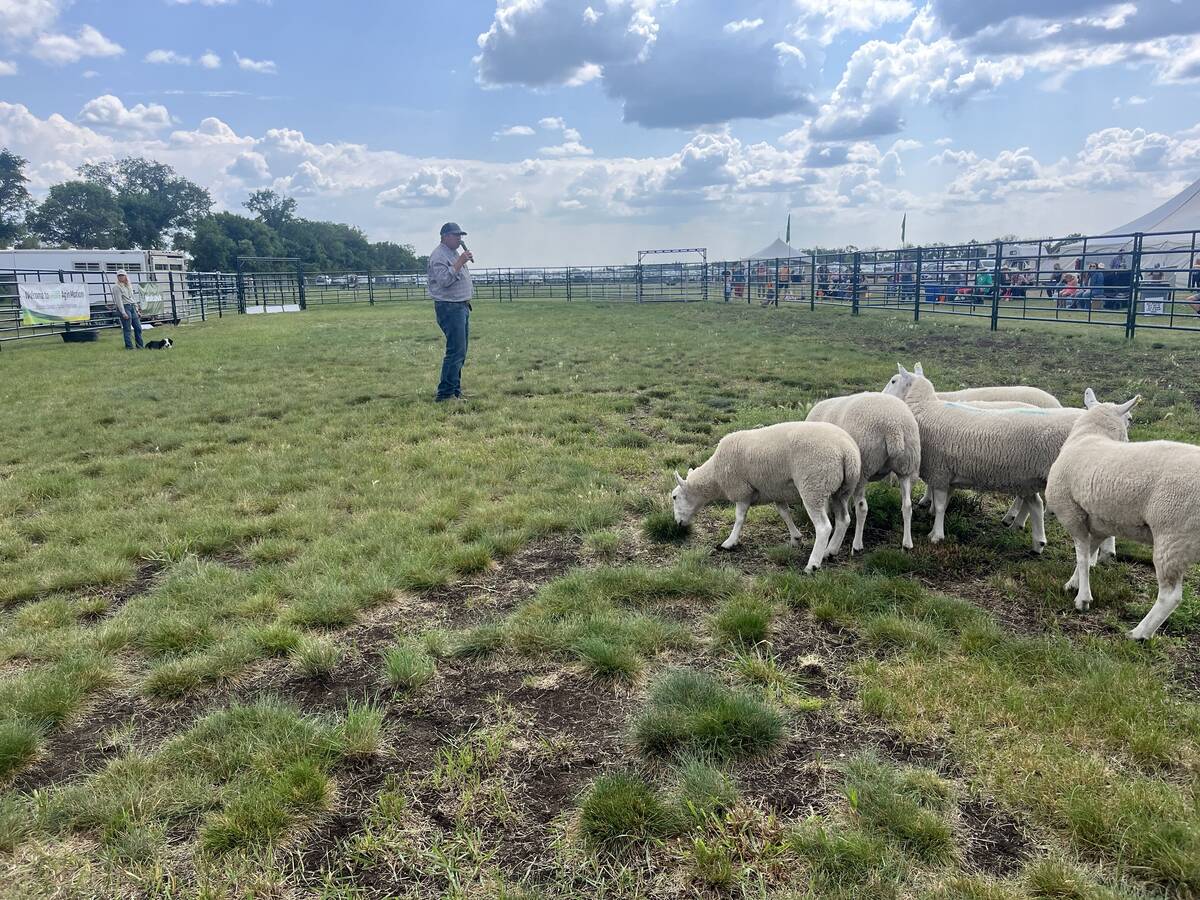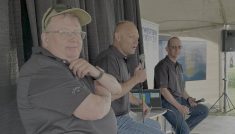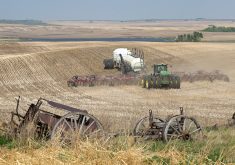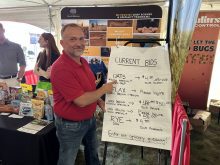MEDICINE HAT, Alta. – Tim Clark thinks the Prairie Farm Rehabilitation Administration has come up with a winner.
Clark, who ranches south of Medicine Hat on the western edge of the Cypress Hills, was one of the first producers to take advantage of a new PFRA-designed plow for laying water pipe underneath pastures.
He has used it to lay several kilometres of five-centimetre, high-density plastic pipe.
“It’s about half the price of the low density and will take a higher pressure,” he said.
Read Also

Stock dogs show off herding skills at Ag in Motion
Stock dogs draw a crowd at Ag in Motion. Border collies and other herding breeds are well known for the work they do on the farm.
Like many cattle producers across the western Prairies, drought is forcing Clark to expand his watering systems.
“I’ve got a well at the yard, but it is dropping and this new pipeline should keep us in water all season.”
So far, producers in the Medicine Hat area have used the new PFRA prototype to lay 40 km of pipe.
Designers in Medicine Hat have built upon PFRA work already done in Manitoba, Saskatchewan and Alberta’s Peace River district.
The Medicine Hat group started with a former Noble plow frame, keeping only the centre section and hitch. A hydraulic ram and arms were added to allow a 1,600 metre reel to be lifted onto the back of the machine from the ground or a truck.
Pasture plows have been around for more than 20 years, but are generally too small and light to be efficient. As well, they can only hold small pipe rolls, which cause too many splices.
Clark said larger reels mean fewer splices.
“We don’t have to stop as often. There aren’t as many chances for a leak.”
Charles Sudom, a PFRA conservation technician who helped build the machine, explained the design process:
“We needed it to take a two-inch pipe and it had to be able to handle (the less flexible) high density (pipe) …. It had to work in the hardest ground, have low disturbance and be able to handle rocks and be easily transported.”
Many pasture plows are mounted on three-point hitches.
However, they are often unable to bury pipe more than 25 centimetres deep because of their light weight design and because the smaller tractors that typically use three-point hitches have power and traction restrictions.
Clark was plowing his pipe about 40 cm deep. While that wouldn’t be deep enough to use year round, it would give freezing protection into December.
The PFRA’s new unit has a single hollow steel shank and uses an inexpensive Bobcat bucket ripper tooth as the opener.
To keep soil disturbance to a minimum, the furrow is cut ahead of the shank with a heavy duty fluted coulter disk with a spring-loaded mount for rock avoidance.
“We added dual wheels to carry the load of the reel and for better flotation on the pasture,” Sudom said.
The pasture plow can be rented from PFRA for $50 a day and can lay 1.5 km of pipe an hour.
It is a less costly solution than the $5 per metre that oil and gas contractors charge for farm-placed pipe.
So far, the designers have had to make several modifications to better balance the machine and reinforce its hitch and reel carrier.
“We had to redesign the front (cross member) when we kind of ripped it in two. The tractor kept going but the pasture plow stayed put,” Sudom said.
The pull type machine requires higher horsepower tractors than traditional plows. It is most effective, even in the hardest soils, with a four-wheel drive tractor.
“It will make a front-wheel assist tractor smoke or spin a little when the going gets really rough,” Sudom said.
“But in clay or better dirt it just rolls along without taking too much power.”
PFRA is working with the County of Cypress in Alberta and plans to release the plow to the county once testing is completed.
The design will also be made available to other PFRA offices.
“(It will be) shared for the public good when we finish with it,” he said.
















